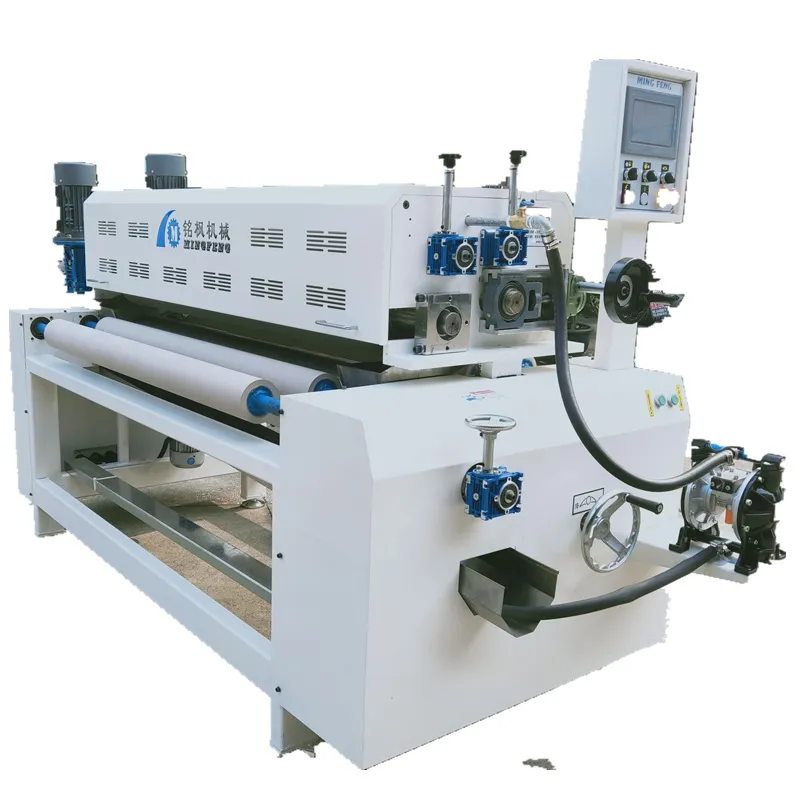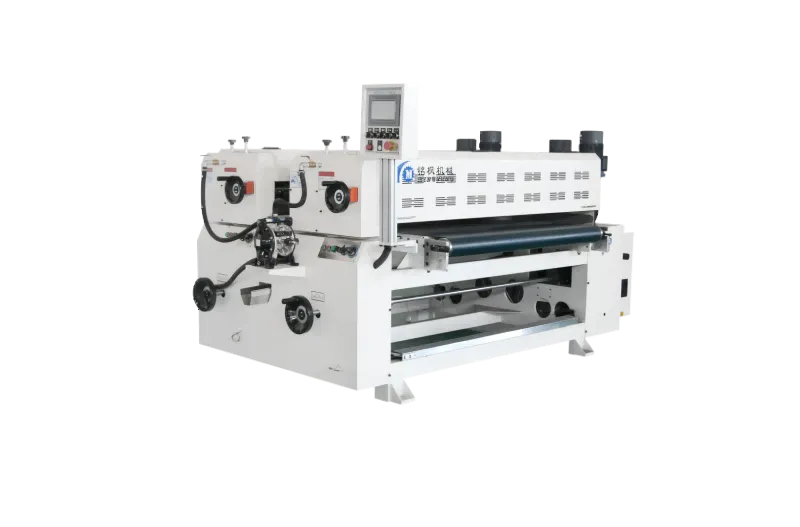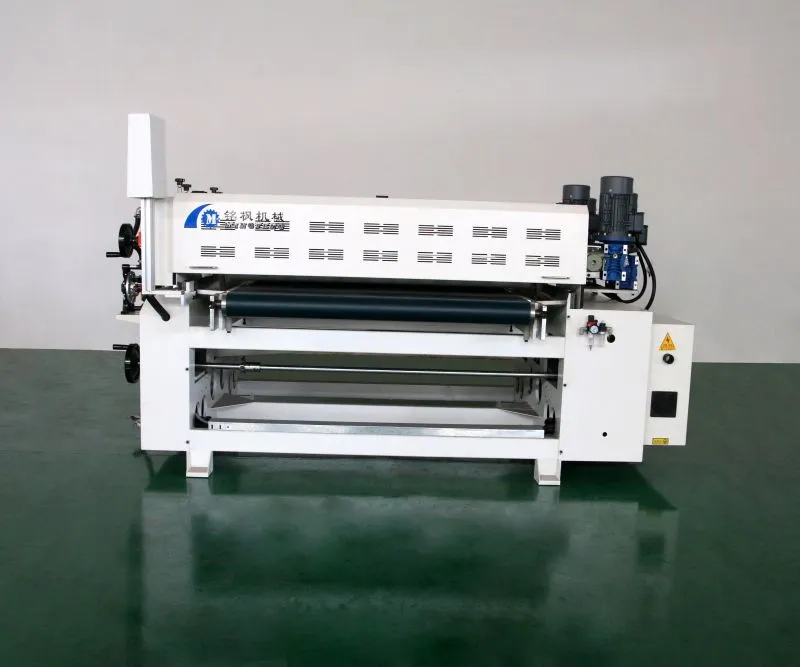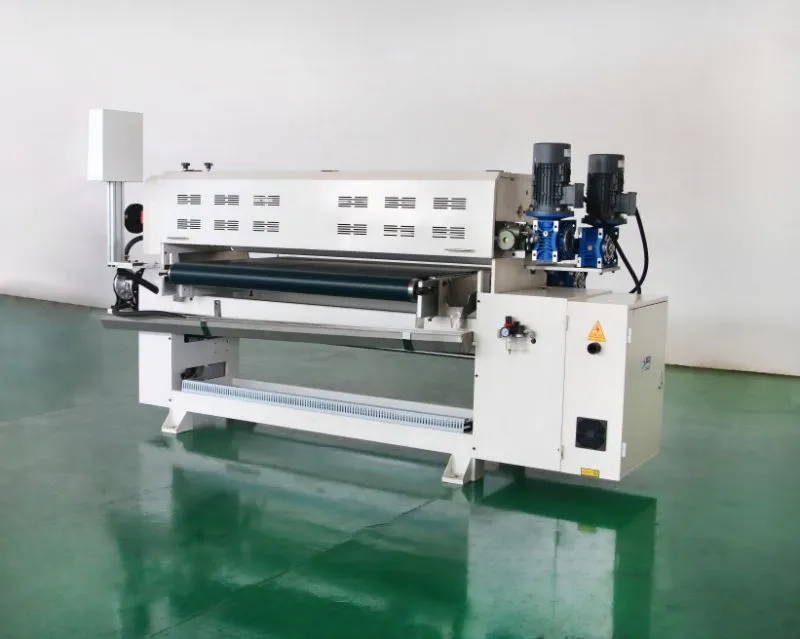In the coating process, roller coating is an important surface treatment method, widely used for applying functional or decorative coatings to materials such as films, paper, metal sheets, fabrics, and wood. Roller coating machines are generally categorized into two types: single roller coating machines and double roller coating machines, depending on the roller structure used in the coating system.
While both types of roller coating equipment are roller coating machines, they differ significantly in terms of structural design, operating principles, application scope, process control, and coating performance. Many users often lack a clear understanding of the differences when selecting a roller coating machine, leading to mismatched equipment and negatively impacting production efficiency and product quality.
This article, focusing on the terms "single roller coating machine" and "double roller coating machine," will provide a detailed, professional analysis of the differences, advantages and disadvantages, and appropriate application scenarios for each type. This will help you accurately determine which type you need.

What is a single roller coating machine?
A single roller coating machine is a type of roller coating machine that uses a coating roller in contact with the substrate to transfer coating to the surface. Its structure is relatively simple, typically consisting of the following components:
· Coating roller: used for coating application;
· Substrate transport platform or carrier roller;
· Doctor blade/metering roller: controls coating thickness;
· Coating supply system;
· Optional drying/curing system (such as hot air, IR, or UV);
A single roller coating machine operates by drawing coating from the supply system and applying it evenly to the substrate through line contact.
Features of a single roller coating machine:
· Simple structure, relatively easy operation and maintenance;
· Suitable for medium- and low-viscosity coatings;
· Thin coatings, suitable for basic coating tasks;
· Low cost and small footprint;
· Coating uniformity and accuracy are subject to certain limitations.
What is a double roller coating machine?
A double roller coating machine is a device that uses two or more rollers to coordinate coating. The most typical structure is a metering roller + a coating roller, with coating thickness controlled by a speed difference or pressure between the two rollers. Sometimes a third "feed roller" is included, forming a "three-roller coating system."
A double roller coating machine includes:
· Feed roller (optional);
· Metering roller: controls feed thickness;
· Coating roller: directly contacts the substrate for coating;
· Substrate transport system;
· Paint circulation system;
· Drying, cooling, or curing unit;
· Precision control unit (speed ratio, gap adjustment, tension adjustment, etc.);
Double roller coating machine features:
· More uniform coating thickness with high repeatability;
· Compatible with medium- and high-viscosity coatings;
· Suitable for high-end processes and high-precision requirements;
· Capable of reverse and forward coating, as well as micro-coating processes;
· Complex structure and high investment cost;
· Higher technical requirements for operation.
Single roller coating machine Vs. Double roller coating machine: Key Differences
Comparison Dimensions | Single Roller Coating Machine | Double Roller Coating Machine |
1. Structural Complexity | Simple, few parts, easy to maintain | Complex, multi-roller system and adjustment mechanism |
| 2. Coating Method | Direct contact between the coating roller and the substrate | Coating roller passes through metering rollers for precise control before contacting the substrate |
| 3. Coating Thickness Control | Rather coarse, relies on a scraper and pressure adjustment | Precise, controlled by roller gap and speed ratio |
| 4. Applicable Coating Viscosity | Low to medium viscosity coating | Adaptable to medium- and high-viscosity coatings |
| 5. Coating Uniformity | Medium uniformity, with some fluctuation | Extremely high uniformity, achieving an accuracy range of ±1μm |
| 6. Coating Thickness Range | Primarily thin coatings (5–50 μm) | Capable of thin or thick coatings (1–200μm) |
| 7. Applicable Material Types | Smooth substrates, highly absorbent materials | Various materials, including flexible, rigid, and non-absorbent |
| 8. Equipment Cost | Relatively low | Relatively high |
| 9. Maintenance Efficiency | Low cost, simple to operate | High, complex adjustment |
| 10. Applicable Applications | General products, economical processing line | Processing of high-value-added products and functional materials |

Single Vs. Double Roller Coating Machine: Which One Do I Need?
——Determining based on the application scenario!
Below, we'll help you determine which type of equipment is most suitable based on practical applications.
Scenario 1: Base protective or decorative layer, medium production volume, limited budget
· Examples include: coating ordinary packaging paper, label paper, decorative paper, varnishing wood surfaces, and primer coating for plastic sheets.
Recommended Equipment: Single Roller Coating Machine
· Reason: Economical, simple structure, and meets general uniformity requirements.
Scenario 2: Products with high requirements for thickness, uniformity, and appearance consistency
· Examples include: high-gloss coated paper, functional coatings, UV protective films, battery electrode materials, optical films, etc.
Recommended Equipment: Double Roller Coating Machine
· Reason: High control accuracy, minimal coating layer error, and adaptability to complex coating systems.
Scenario 3: Processing high-viscosity coatings, requiring frequent switching between multiple coatings
· Examples include: hot melt adhesives, UV coatings, reactive resins, functional additives, nanomaterials, etc.
Recommended Equipment: Double Roller Coating Machine
· Reason: Greater adaptability, less prone to clogging, and flow control through speed differentials.
Scenario 4: Production line space is limited, and operational convenience is a high priority
· For example: customized production, small-batch trial runs, and laboratory coating operations.
Recommended Equipment: Single Roller Coating Machine
· Reason: Compact size, fast adjustment, suitable for small-scale or initial projects.

How to choose the right coating equipment for your needs?
When deciding on the coating machine, consider the following five factors:
1. Material Properties
Flexible materials or films: A dual-roller configuration is more suitable.
Highly absorbent paper: A single-roller configuration is suitable.
2. Coating Function
If you require high surface quality, scratch resistance, UV protection, or other features, a dual-roller configuration should be selected.
If you only need a base protective layer and adhesive layer, a single-roller configuration is recommended.
3. Coating Type
High-viscosity, fast-drying, reactive coatings: A dual-roller configuration is essential for controlled coating volume.
Dilutable, conventional water-based/oil-based coatings: A single-roller coating machine can be used.
4. Production Capacity and Precision Requirements
High production capacity, high precision, and high consistency: A dual-roller configuration is suitable.
Medium-to-low speed, low-cost production lines: A single-roller configuration is suitable.
5. Budget and Maintenance Capabilities
If you have tight budgets and limited maintenance resources: A single-roller configuration is preferred.
If you have a high budget and skilled personnel available: A dual-roller configuration is recommended for long-term quality assurance.

Single Roller Coating Machine vs. Double Roller Coating Machine
Finally, let's summarize the reasons based on simple logic:
1. If you're looking for simple operation, a low entry cost, and coating common products, choose a single roller coating machine.
2. If you're looking for high-quality coatings, high viscosity control, and complex functional products, choose a double roller coating machine.
One is not superior to the other, but rather focuses on different areas. Choosing the right equipment type is fundamental to improving product performance and ensuring production efficiency.
What types of coating machines are available from XMF?
XMF Machinery's product range includes roller coating machines, spray coating lines, printing machines, special-shaped wood line roller coating machines, mud coating machines, embossing machines, and UV curing equipment.
As an experienced manufacturer and company, we supply tailored machinery for a variety of substrates and processes, whether you need paint coating, pattern printing, embossing, or drying. Customers can purchase standard models or request customized designs.
